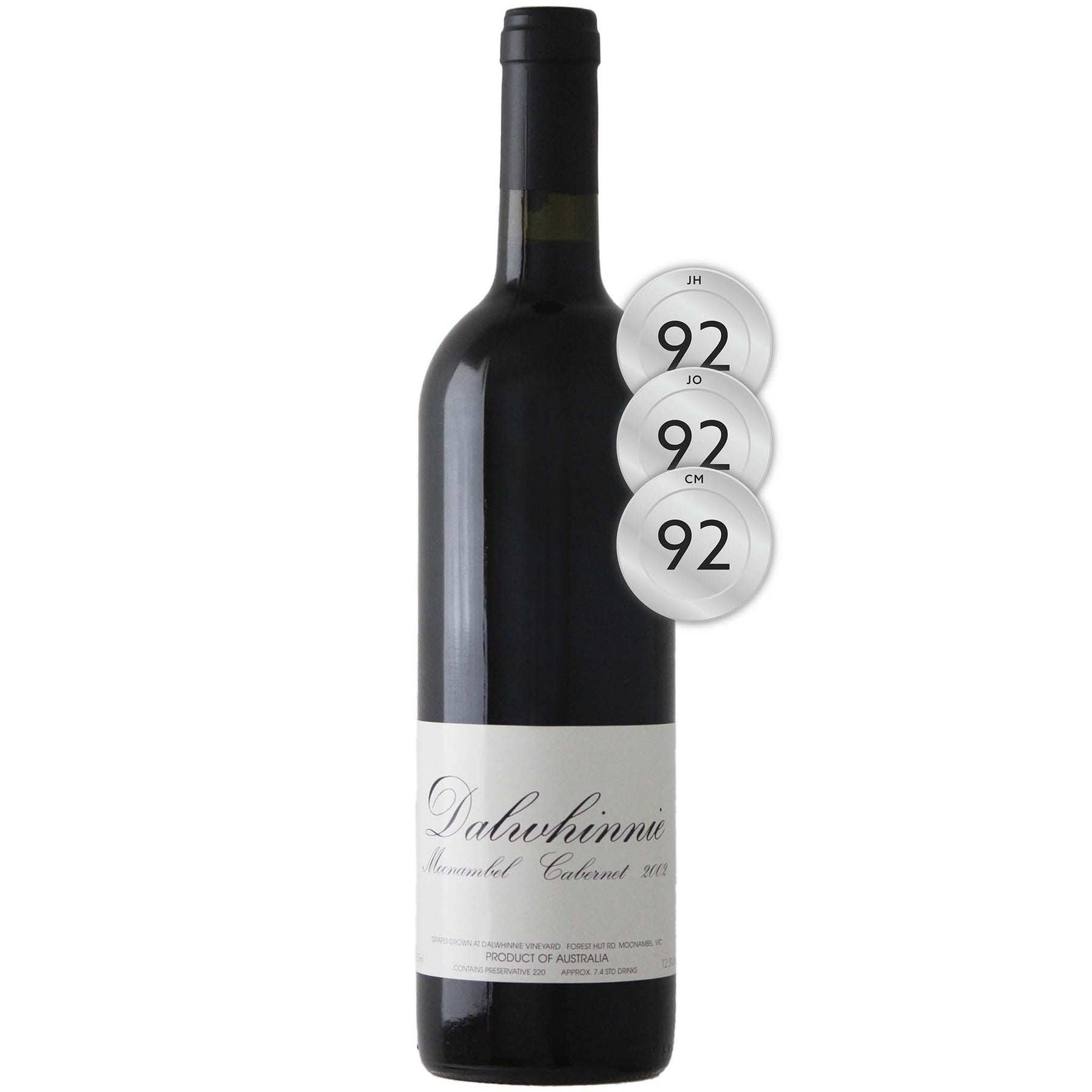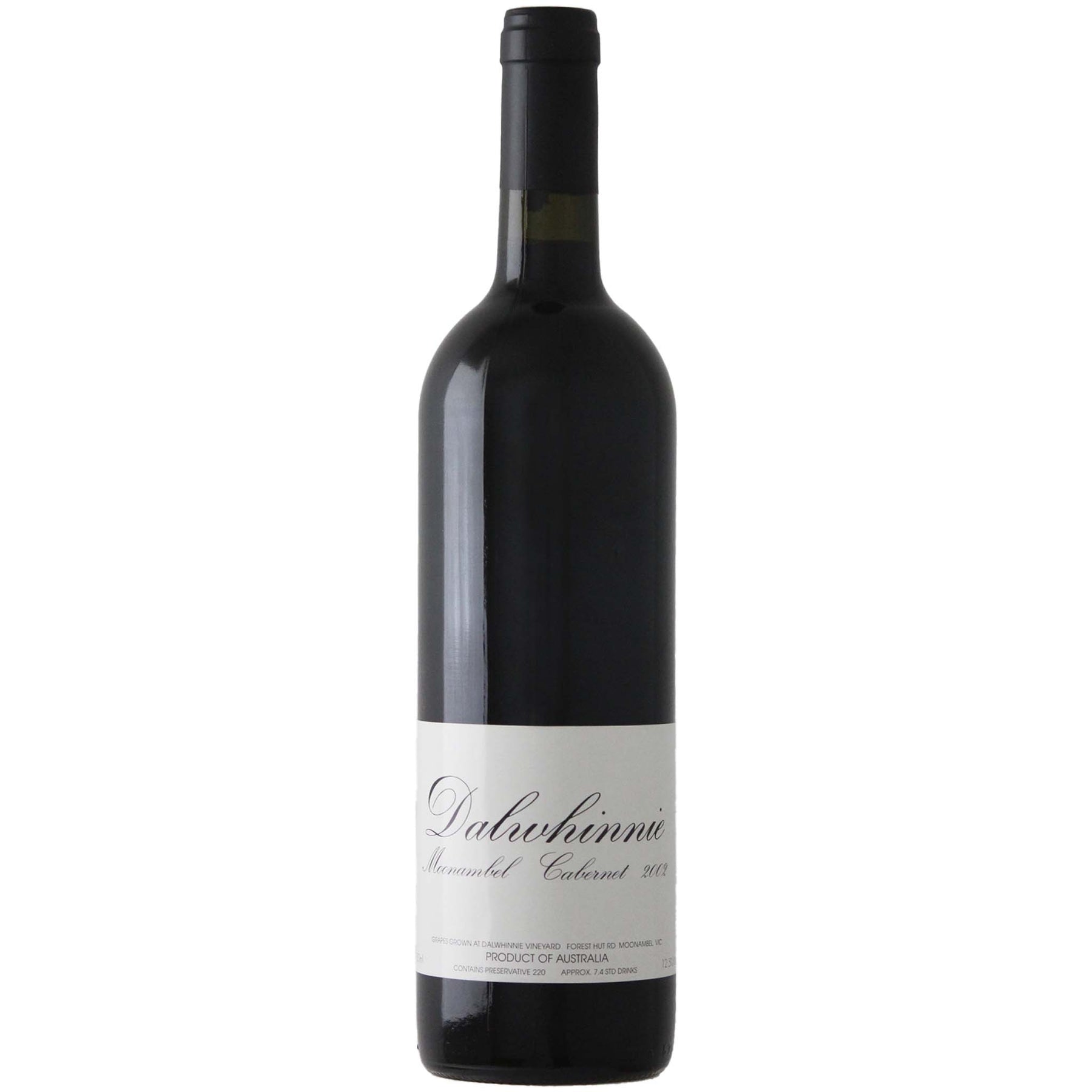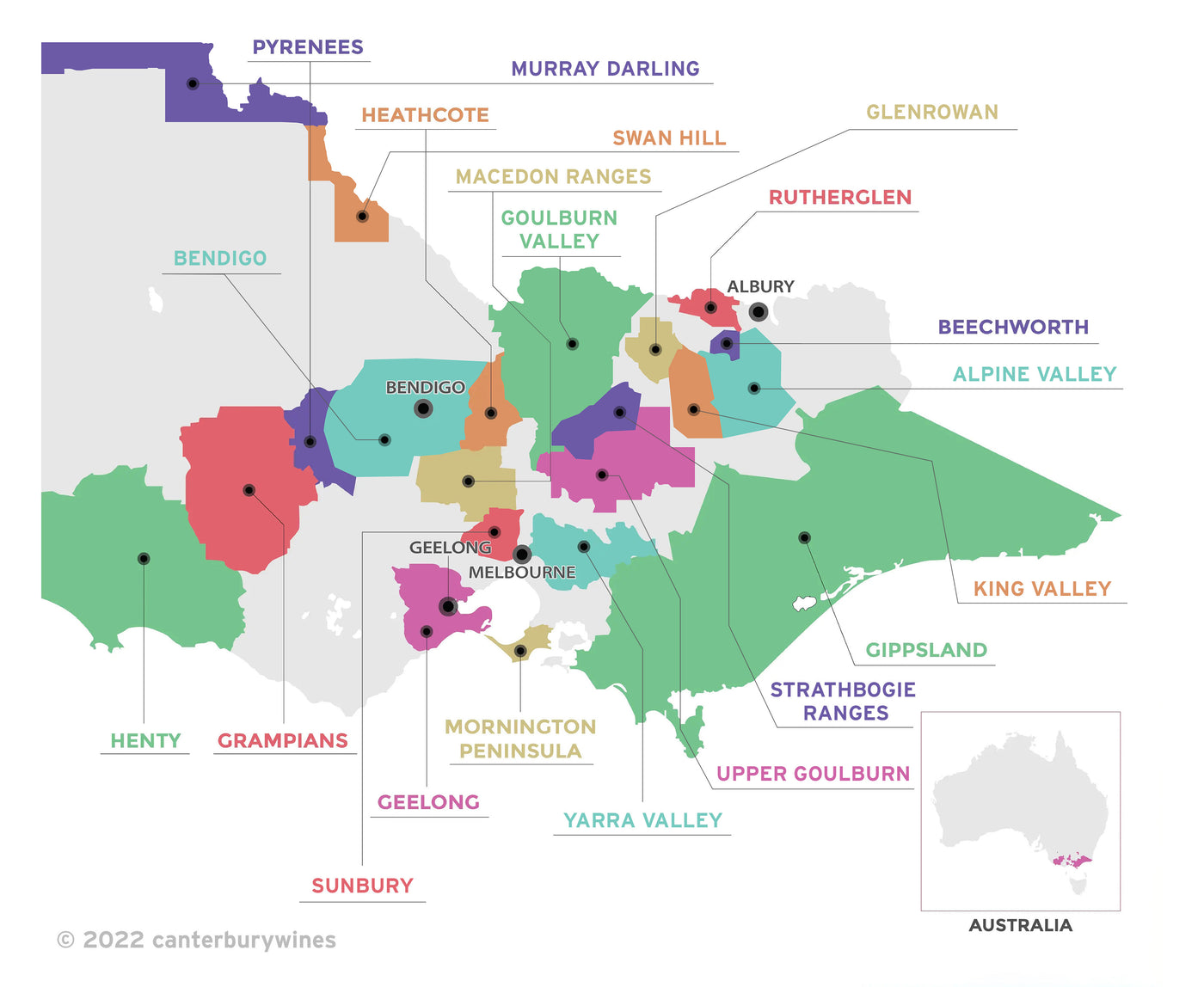

Dalwhinnie Moonambel Cabernet Sauvignon 2002
Style: Red Wine
Closure: Cork
Dalwhinnie Moonambel Cabernet Sauvignon 2002
Warehouse
34 Redland Drive
Vermont VIC 3133
Australia
Critic Score: 92
Alcohol: 12.5%
Size: 750 ml
Drink by: Now
Dalwhinnie, located near the small village of Moonambel in the heart of the Pyrenees region of western Victoria, is one of Victoria's oldest family-run vineyards. Dalwhinnie has been growing grapes for nearly 50 years and the 16-hectare vineyard is now fully mature. At 595 metres above sea level, Dalwhinnie is the highest and most remote of the Pyrenees district vineyards. The vineyard is located in a naturally undulating trough which falls away from the hills, forming an amphitheatre nestled into the ranges.
"Dalwhinnie's shiraz gets lots of attention, but sadly its equally magnificent cabernet sauvignon is often overlooked. The deep purple colour indicates its potency, as the nose confirms with ripe blueberries and blackcurrants, and a hint of wild gorse adding character. The flavours fill the mouth with an intense sweet/savoury sensation, while the taut, sinewy tannins lead to a near endless finish." Peter Bourne
"Dalwhinnie wines have tremendous depth of flavour, reflecting the relatively low-yielding but well-maintained vineyards. The vineyards are dry-grown and managed organically, hence the low yield, but the quality more than compensates." James Halliday
Expert reviews
"Dalwhinnie's shiraz gets lots of attention, but sadly its equally magnificent cabernet sauvignon is often overlooked — despite the fact that it's $10 cheaper. The deep purple colour indicates its potency, as the nose confirms with ripe blueberries and blackcurrants, and a hint of wild gorse adding character. The flavours fill the mouth with an intense sweet/savoury sensation, while the taut, sinewy tannins lead to a near endless finish. A wine that will last to 2010 and beyond." Peter Bourne, Australian Gourmet Traveller Wine – Best Buy Wines to Cellar
"Dalwhinnie cabernet often tends towards the austere, and almost always towards the tannic – here, appreciably, the tannins are finer and longer than previous and the austerity almost taken to another level – making it a fine, long, stylist's wine with flavours of mulberry, red dust and blackcurrant but better represented by its long, fragrant, sense of command. It needs time, but given it, it should become a beautiful wine. Drink: 2008-216." Campbell Mattinson, Winefront Monthly - 92 points
"A very elegant, fine and stylish cabernet from this vineyard, which traditionally has produced a firmer cabernet of considerable astringency. There's a minty whiff of menthol and sweet cedar/vanilla oak beneath its concentrated cassis and violet aromas, while the long and slightly sinewy palate reveals pleasing integration of vibrant plum and blackberry flavours. Drink 2014-2022." Jeremy Oliver - 92 points
"Focused, concentrated blackcurrant and earth varietal fruit; long, persuasive tannins; overall distinctly savoury. Drink to 2014." James Halliday, Halliday Wine Companion – 92 points
About the winery

Dalwhinnie, located near the small village of Moonambel in the heart of the Pyrenees region of western Victoria, is one of Victoria's oldest family-run vineyards. Dalwhinnie has been growing grapes for nearly 50 years and the 16-hectare vineyard is now fully mature.
Ballarat architect Ewan Jones purchased the site in 1973 and named it after the Highlands town of his Scottish ancestors. He established the vineyard in 1976 and his eldest son, David, took over its management seven years later. David subsequently purchased the property in 1994 and operated Dalwhinnie until January 2020, when it was acquired by Fogarty Wine Group.
At 595 metres above sea level, Dalwhinnie is the highest and most remote of the Pyrenees district vineyards. The vineyard is located in a naturally undulating trough which falls away from the hills, forming an amphitheatre nestled into the ranges. According to David Jones, the hills and the sedimentary soils of the Pyrenees are vital factors in the vineyard's uniqueness.
The main grape varieties grown are Chardonnay, Shiraz and Cabernet Sauvignon. These small individual vineyards average around 1.8 hectares in size and because of the hungry sedimentary soils, cropping levels are low - only 1.5 tonnes per 0.8 of a hectare.
The site is totally frost-free which enables the grapes to reach optimum ripeness. The vineyard is non-irrigated and operated on strong organic viticultural principles. The fruit is hand-picked and the vines are cane-pruned by hand. Harvest usually starts the third week in February and is completed around the first week in April. Cover crops are sown every year between the vineyard rows to add nitrogen to the soil. The average annual rainfall is 550mm with most rain falling between July and November.
"In Dalwhinnie, the Joneses have happened upon that rare but blessed confluence of factors: site, soil, climate, cultivars, viticultural practices and sensitive winemaking. Sit back and watch, as Dalwhinnie etches a name for itself, not only among the great wines of Australia, but the world." Huon Hooke

Victoria
Victoria is home to more than 800 wineries across 21 wine regions. The regions are Alpine Valley, Beechworth, Bendigo, Geelong, Gippsland, Glenrowan, Goulburn Valley, Grampians, Heathcote, Henty, King Valley, Macedon Ranges, Mornington Peninsula, Murray Darling, Pyrenees, Rutherglen, Strathbogie Ranges, Sunbury, Swan Hill, Upper Goulburn and Yarra Valley.
Victoria's first vines were planted at Yering in the Yarra Valley in 1838. By 1868 over 3,000 acres had been planted in Victoria, establishing Victoria as the premier wine State of the day. Today, the original vineyards planted at Best's Wines are among the oldest and rarest pre-phylloxera plantings in the world.
Victoria's climate varies from hot and dry in the north to cool in the south and each wine region specialises in different varietals. For example, Rutherglen in the north is famous for its opulent Muscats and Topaque and bold reds, while the many cooler climate regions near Melbourne produce world class Chardonnay and pinot Noir. Victoria is truly a wine lover's playground.

